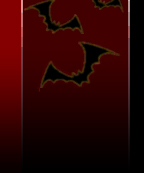|
Castlevania 2: Simon's Quest (1988)

Castlevania 2: Simon's Quest begins with a title screen. If you let it sit for a couple minutes, you get a goofy message welcoming you to the "Hell House", vaguely detailing the plot. It's been a few years since the original Castlevania, and instead of reveling in the spoils of his victory against Dracula, Simon Belmont has fallen ill underneath Dracula's curse. The only way to save himself is by adventuring through the countryside to find Dracula's body parts - which have been mysteriously scattered all about - and burn them. When you're ready to begin the game proper, you can press Start, and you're plopped in the middle of a town. To a kid who'd only played the original Castlevania, it was pretty clear that something was amiss.
The original Castlevania was mostly about reflexes, but beyond that, it wasn't too taxing brain-wise. Walk to the right. Jump. Walk up some stairs. Bucking some major trends, occasionally you would be asked to walk to the left. That was about it.
Castlevania 2 doesn't tell you where to go - you need to figure it out for your damn self, you little bastard. If you walk down the steps and walk to the left, you'll get assaulted by wolves and probably massacred. If you're stupid enough to continue, you'll end up in a swamp which will slowly sap your life, all while you're being assault by mudmen spitting got-knows-what at you, which will also probably kill you. Walking left is, all things said, a bad idea.
So you walk to the right, and you'll end up in a forest. Things are slightly better here, but you can keep walking until you reach another town. And then another forest. Then you come to a mansion, which you can choose to enter or not. If you continue, and eventually you'll hit a dead end. You can double back to the mansion, but it seems completely inaccessible. Sure, there seems to be an area to explore, but it's just out of reach, and the only thing nearby is a pool of water. Which will also kill you, if you step into it. Vampire hunters can apparently wield whips with deadly accuracy, but are terribly swimmers.
The solution to get into the castle is, obviously, to buy the White Crystal from one of the guys in town, and equip it. Then a secret platform will appear, which allows you to start exploring the castle. This is, until you start falling through solid objects, requiring that you return to the start point and begin your platforming from scratch.
If you happen to fall into the water at the bottom of the mansion, that's okay. Although you have three lives, they barely mean anything. You can continue right where you left off, only docking experience points as a penalty for your failure. The enemies barely pose a challenge. You can run right past most of the bosses, if you can call them that. Kill me if you feel like it, they say. Somehow, this makes the Grim Reaper a lot less scary. Count Dracula, the final boss, can be killed by a well placed clove of garlic. Which, all things said, is pretty embarrassing.
Most of the early Castlevanias were so difficult because they tossed so much at you and forced you to deal with a limited control scheme. Simon's Quest is difficult because you almost never know what the hell you're supposed to do. The only clues you can possibly get are by talking to the many townspeople found throughout the game, but a vast majority of them are crazy, filthy liars. You meet women who appear to be prostitutes, crazy old men who sit in dark rooms all day, adventuring knights who are very concerned with trading crystals, and the occasional paranoid lunatic who is drastically concerned with nonsensical things like the "Death Star". What useful bits you can actually decipher from all of this is usually mangled by the hilarious translation, although the original Japanese is apparently just as confusing.
Castlevania 2 seems to revel in making the player feel paranoid, which is especially evident in the numerous fake floors throughout the game, practically demanding that you toss some holy water every few steps to make sure you don't end up stepping into a trap. It also has one of the most baffling status screens known to mankind. You see, the game has a day/night cycle, so more powerful enemies will show up at night. Additionally, the amount of time it takes to complete the game will determine your ending. Technically both of these are listed on the status screen, but until you figure out how it works, good luck. As much as this makes the game feel dated, I admit I have a certain admiration for older games that went out of their way to play with the gamer and make them feel stupid, even though there's no real way to conquer them outside of buying a hint guide (which, back in 1988, were usually awful books filled with completely incorrect passwords.). It's all pretty funny, as long as you don't take everything too seriously.
All of these changes seemed to have been influenced by the MSX version of Akumajou Dracula, known as Vampire Killer elsewhere, which focused a bit more on exploration than the NES original. This influence is apparent right down to Simon's altered outfit - here, he appears with black hair and a red outfit, a departure from the brown messes of pixels that he's portrayed as in the original game. However, in Vampire Killer, it was simple enough that you could solve each area by simply whipping every block, the same tactic which worked with similarly structured NES games of the era like Metroid. You'll need to do this in Castlevania 2, except there are a lot more blocks.
You'll almost definitely need to make your own map, since as an early NES game, there's very little way of changing scenery. The towns look practically identical, except for the changes in brick color. Ditto with the mansions, and the forests, and the few caves that you'll run across. Compared to other similarly structured games like the aforementioned Metroid and Konami's own The Goonies 2, Castlevania 2's game world is relatively small, so it's never too completely overwhelming, Plus, all of this exploration is backed by one of the most amazing soundtracks on the console. There are only maybe seven songs in the entire game, but all of them are incredible, including the classic town theme and the first appearance the hallmark song "Bloody Tears", featured as Simon adventures during the daytime. The sound quality is among the best on the NES - I don't know what kind of virgins Konami sacrificed to make a game sound this good, but it's easily up there next to Sunsoft's efforts on the awesome scale.
Although yes, it's old and confusing, Castlevania 2 is still plenty of fun, and is greatly aided by a FAQ. It also influenced Castlevania: Symphony of the Night and all of its successors, making it an extremely important member of the series.
Thanks to Rob Strangman for the manual scans.
Castlevania 2 Artwork

Back to Top
Castlevania Games - Castlevania 2
|
|
|



